

Most people born before 1990 have some familiarity with the rock band KISS. Fans my age (44) remember the glory years in the mid- to late ’70s, while younger fans remember the reunion tours of the mid-’90s, or bass player Gene Simmons’ A&E reality show, Family Jewels. Hand in hand with familiarity come opinions regarding the efficacy of the group: Were they just a glam band with a great marketing plan? Is their music any good? Or as my friend Debbie said, “They’re okay, but they’re no Scorpions!”
I’d like to help the non-KISS fan here to:
- recognize the musical appeal of the group;
- know which albums to embrace and avoid;
- gain a greater appreciation for what KISS did for live rock ‘n’ roll performance.
By the same token, KISS did (and continues to do) ridiculously stupid things, and pointing out some of those foibles makes for good sport. So let’s begin at the beginning with the first three albums, released in 1974 and ’75.
Skip all three. They’re crap.
Although the covers of KISS, Hotter Than Hell, and Dressed to Kill are some of the best the band ever had, these musical clunkers are only suitable for framing (most Walmarts carry album frames you can use to showcase the covers on your wall, like I have). Slapped together under pressure from their label, Casablanca Records, and produced as if they were recorded in an oil drum, they shouldn’t be listened to, period. If you were to listen to any of them out of context, your perceptions of KISS would be forever tarnished.
The first, self-titled album was recorded in late ’73 and released in February of ’74. KISS‘s cover is significant in that drummer Peter Criss had his makeup done by a professional makeup artist, giving him a one-time-only, intricate multi-color cat-whisker look he would never have again. Lead guitarist Ace Frehley’s silver-tinged hair was the result of spray paint he applied in order to blend in with the silver-and-black color scheme of the band.
KISS contains many of the songs the band continues to play in concert to this day: “Deuce,” “Strutter,” and “Cold Gin” (written by Ace) are classics. One of the most interesting songs on the record, “Kissin’ Time,” is a cover of the Bobby Rydell classic, and was included on the record as part of a publicity stunt by Casablanca, which sponsored a “KISSing Contest” in stores across the Midwest as a way to bring attention to the band.
The next album, Hotter Than Hell, was recorded during the band’s 1974 U.S. tour when they stopped off in L.A., and was released in October of that year. Produced again by the team of Kenny Kerner and Richie Wise, it’s a darker album, with several concert staples, including “Got to Choose,” “Parasite,” and the awesome title track. The cover of Hotter Than Hell has an interesting backstory as well, with all the band members, except self-proclaimed teetotaler Gene, extremely drunk and engaging in hedonistic behavior encouraged by the photographer. Also, Ace was recovering from a recent car accident, so his cover shot is actually two different pictures of his face airbrushed to look like one.
The final album in this unofficial trilogy, Dressed to Kill, was recorded quickly in New York in early ’75 at the request of Casablanca in order to build some momentum for KISS and combat sluggish sales of the first two records. It’s the weakest of the three in terms of songs, with plenty of filler (“Ladies in Waiting” and “Getaway” are musical turds), though “Love Her All I Can” has a great riff.
However, Dressed to Kill is frequently cited by all four of KISS’s original members as their favorite early album. Maybe that’s because it features the band’s best-known anthem, “Rock and Roll All Nite.” A great song, to be sure, but not in the form you find it on this record. Great songs like “She” and “Rock Bottom” are here as well, but they reappear in an awesome way on the next record — a record that should change your life, if you like rock ‘n’ roll.
The live album Alive!, released in June of ’75, contains enough three-chord blues-based rock to satisfy any Led Zep, AC/DC, or Nickelback fan. Rumors persist that half the album was actually overdubbed in the studio — it depends on whose account you want to believe — but who cares? Recorded at shows in Iowa, Ohio, and mostly Detroit, Michigan, in early ’75, this two-record set jumps right out of your speakers from the first song on. If the hairs on the back of your neck don’t stand up after hearing Ace’s solo at the end of “She,” check your pulse — that song made me want to buy a Cherry Sunburst Les Paul! The molten chunk of “Firehouse,” the falsetto vocals in “Got to Choose” — Alive! is the reason most of us older fans became fans.
The cover of the record makes you want to see the band live (it was staged instead of actually shot during the tour it represents), and the gritty songs should help change your perception of the group. Can they actually play? Hell yes! Once you’ve been satiated by this audio ear candy, it’s time to move back into the studio with KISS.
Buy all three of these — today! Destroyer (1976), Rock and Roll Over (1976), and Love Gun (1977) represent the apex of rockin’ studio work by the original lineup of Gene, Ace, Peter, and lead singer and rhythm guitarist Paul Stanley. Mostly great songs on all three albums, superior production compared to their previous three studio records, and a true sense that these guys were a combination of rock stars, great instrumentalists (especially Ace), and superheroes (no doubt the mass marketing of KISS merchandise that started around this time had something to do with that latter perception).
Highlights from these three albums include concert staples like “Detroit Rock City,” “Calling Dr. Love,” and “Love Gun,” while lesser-known tunes guaranteed to rock your crotch include “King of the Night Time World”, “I Want You,” and “I Stole Your Love.” “Shock Me,” the first KISS song with Ace on lead vocal, and “Makin’ Love” are both standout tracks as well. Good ‘n’ hard ’70s-style rock, sure to please. Now, are you ready for some live versions of the tunes I’ve just mentioned? Then you should buy the next collection …
KISS’s second double album of live material, Alive II, was released near the end of 1977, at the zenith of the band’s popularity and credibility, and features versions of “Makin’ Love” and “Detroit Rock City” that you’ll thoroughly enjoy. You’ll hear how Paul pulls off his high-pitched vocals in a live setting, you’ll hear the guitar feedback and Ace’s incredible solos, and you’ll enjoy looking at the cover of the product, another classic featuring a bloody Gene, a pensive Paul, a practically blond Ace, and an unusually friendly-looking Peter.
Plus, the five new “bonus tracks” tacked onto the end of Alive II include a couple of classics: Ace’s “Rocket Ride” (the only one of these studio tunes Ace actually played on) and “All-American Man,” featuring the guitar stylings of Bob Kulick, older brother of future KISS guitarist Bruce Kulick. A little over half of Alive II is required listening, which gives it good “KISS value.” Now, dear reader, it’s time to tread cautiously into an interesting chapter in KISStory: the post-renaissance period.
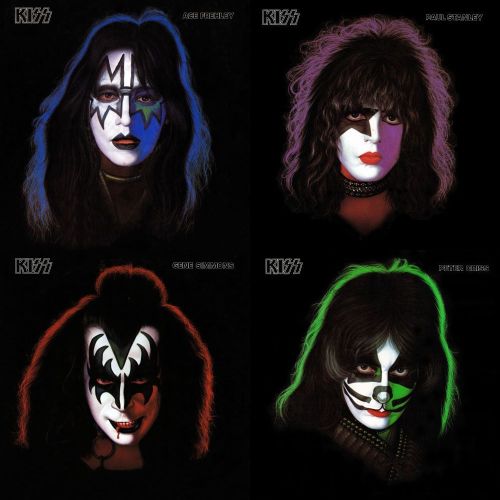
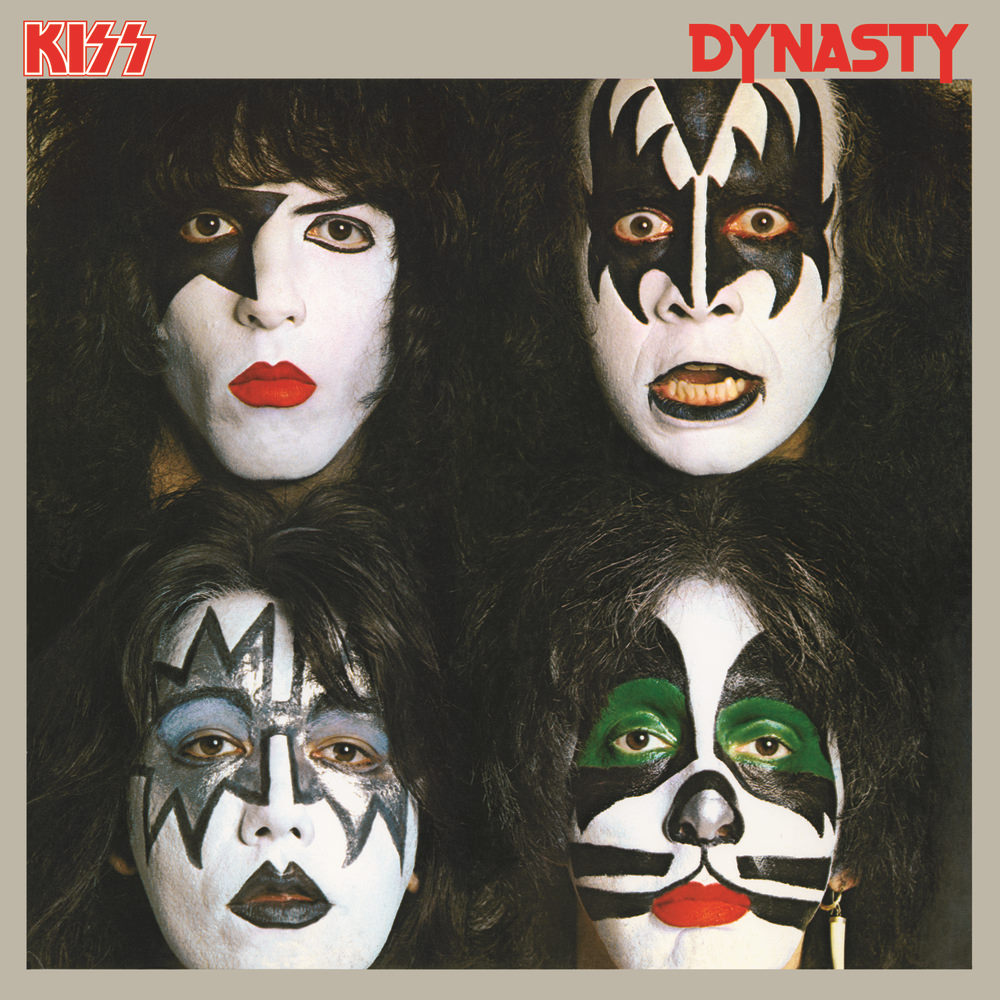 The albums pictured above represent the end of the first incarnation of the original KISS lineup. (Side note: beware of a collection called The Originals, featuring the first three crummy albums packaged together, and Double Platinum, a worthless compilation of songs from the first three records with “Strutter ’78,” a reworked, horrible version of “Strutter,” thrown in.) The four self-titled solo albums were conceived by Casablanca as a way to give each member of KISS some artistic breathing room while getting the maximum financial bang for their buck from the record-buying public.
The albums pictured above represent the end of the first incarnation of the original KISS lineup. (Side note: beware of a collection called The Originals, featuring the first three crummy albums packaged together, and Double Platinum, a worthless compilation of songs from the first three records with “Strutter ’78,” a reworked, horrible version of “Strutter,” thrown in.) The four self-titled solo albums were conceived by Casablanca as a way to give each member of KISS some artistic breathing room while getting the maximum financial bang for their buck from the record-buying public.
All four albums were released on the same day in September of ’78, about a month before the premiere of the KISS made-for-TV movie KISS Meets the Phantom of the Park. According to several sources, making the movie was a real bitch and tempers flared often; both Ace and Peter allegedly threatened to leave the band if they weren’t given a chance to do their own thing.
The solo album by Ace is considered the best of the four, spawning the excellent Top 40 hit “New York Groove” and the solid deep cut “Rip It Out,” while Peter’s effort was universally panned. It was the weakest seller of the four (ouch!), and it’s not difficult to hear why. Full of poorly conceived soul tunes and R&B covers, like “Tossin’ and Turnin'” (download), it is, in short, a truly wretched album.
Paul’s solo album is a solid collection of rock songs, including “Move On,” which the band played live on several subsequent tours, and “Hold Me, Touch Me.” The Starchild’s record, which employs journeyman guitarist Bob Kulick once again, sounds the most like a late-’70s KISS album.
Gene readily admits he was trying to shock KISS fans when he put together his misguided collection of wacky tunes, including a cover of “When You Wish Upon a Star,” and he doesn’t play any bass parts on Gene Simmons, preferring to play rhythm guitar and some keyboards instead. “Radioactive” is the only song that got any attention from this album; KISS played it during their subsequent Return of KISS tour in ’79.
Peter was on his way out of the band as Dynasty (1979) was being recorded (he plays on only one track, the forgettable but accurate “Dirty Livin'”), but this album is most famous for its disco hit, “”I Was Made for Loving You.” Dynasty has many worthy tracks, though, including “Sure Know Something” and “Magic Touch.” Ace returns with a couple of tunes, including a cover of the Rolling Stones’ “2000 Man,” and Gene submits the album’s low point, “Charisma,” quite possibly the worst song he ever wrote, but luckily it’s not enough to ruin the record.
Now we enter the period of KISStory I call “musical members.”
Peter Criss left KISS in 1980 — he claims he left to pursue his solo career, while Gene and Paul insist he was fired due to drug use and poor musicianship — and was replaced by wunderkind drummer Eric Carr (who would remain with the band until his death from cancer in ’91). Unmasked (1980) features Peter on the cartoon cover, but all the drum parts were played by longtime Late Show With David Letterman drummer and former session pro Anton Fig. I hesitate to recommend this album, basically because itÁ¢€â„¢s a poppy, muddily recorded mess, but two tracks stand out: “Shandi,” of which a far superior live version is available, and “Talk to Me. Is That You?” is a Paul Stanley rocker that deserves a listen, but Unmasked is mostly a dud.
Entire chapters could be written about KISS’s next project, 1981’s Music From The Elder, an ill-fated concept album produced by Bob Ezrin (who produced Pink Floyd’s The Wall and KISS’ earlier masterpiece, Destroyer). It was such a monumental commercial flop that it nearly bankrupted the band; they literally had to sue Casablanca Records to get back on their feet. The only song worth recommending from this weird collection is “A World Without Heroes,” an interesting ballad cowritten by Gene and Lou Reed. During the mess that was the recording sessions for The Elder, Ace began making noises about leaving the group, and he was ultimately replaced in the studio during the recording of KISS’s next album, Creatures of the Night (1982).
Creatures is a solid rock record, featuring songs like “War Machine” (cowritten by Bryan Adams — yes, that Bryan Adams), “I Still Love You,” and the title track. Ace’s likeness is featured on the cover, and he’s also featured (with short hair!) in the video for the awful single “I Love It Loud,” written by Gene. But Vinnie Vincent cowrote many of the songs on Creatures and played most of the lead-guitar parts, giving the album a welcomed heavy vibe. Between Creatures of the Night and Lick It Up, Vinnie officially replaced Ace.
Prior to recording the follow-up to Creatures, KISS removed their famous makeup during a late-night MTV “exclusive.” Lick It Up, which came out in September of ’83, is another solid rock record, with the title track being the strongest cut (later live versions, with real guitar solos and better vocals, make the studio version sound rather tame). Animalize (1984) repeats the formula of Creatures of the Night, with heavy rock tunes and even faster guitar solos courtesy of new lead guitarist Mark St. John, who replaced the mercurial Vincent in early ’84. The tracks “Under the Gun,” “Get All You Can Take,” and the radio hit “Heaven’s on Fire” are all A-list rock songs that help KISS fans forget musical bowel movements like Gene’s “Lonely Is the Hunter.”
The albums KISS recorded during the last half of the ’80s featured the lineup of Gene, Paul, Eric Carr, and new lead guitarist Bruce Kulick. All in their mid-30s by now, KISS were playing well, looking average, and basically assuming a B-level status in the American rock world.
Asylum (1985) is an okay rock record. The Led Zeppelin rip-off “Radar for Love” is well crafted, and “Ugh! All Night” is a personal favorite, but the single “Tears Are Falling” is clearly the best cut. Alas, Asylum is barely recommendable.
Crazy Nights (1987) was produced by pop-rock expert Ron Nevison, who crafted Heart’s big comeback album in ’85, and the songs show it — poppy candy-rock anthems that are safe enough to play for your parents, like “Reason to Live” and the well-intentioned but lame title track. You won’t be missing any of the “essence” of KISS if you skip this album, but it should be noted that Crazy Nights sold well compared to other later-career KISS records and even got some radio airplay.
Hot in the Shade (1989) is a great hard-rock album, with highlights like “Rise to It,” “Hide Your Heart,” and the hit single “Forever.” Eric Carr finally gets his writing/singing showcased on the rocker “Little Caesar,” but it would be the last album he’d record with the band — he succumbed to cancer near the end of ’91, when KISS were in the early stages of writing their next studio album.
Before we leave KISS in the ’80s, be sure to avoid buying the 1988 greatest-hits package Smashes, Thrashes & Hits — this lamely titled collection doesn’t thrash at all. It’s only noteworthy for the inclusion of the ’70s hit “Beth” with Eric Carr singing the lead vocal in place of Peter Criss. (I know — why?) The new songs on the record, “Let’s Put the X in Sex” and “You Make Me Rock Hard,” are Paul Stanley throwaways.
Revenge (1992), featuring new blond drummer Eric Singer, who replaced the recently deceased Carr, is a great party album. (Ignore the dark, brooding cover and title.) Produced by Bob Ezrin, it features mindless, catchy hard-rock tunes like “Take It Off,” “I Just Wanna,” and “Domino.” Gene and Vinnie Vincent, who returned to the band as a songwriter for Revenge, got together to write the creepy but sturdy “Unholy” (the video is disturbing too).
For many fans, including myself, Revenge is the final studio album that matters from the unmasked lineup of the band. I mention this because a “final” album from Gene, Paul, Singer, and Kulick — Carnival of Souls: The Final Sessions — came out in October of ’97. Recorded in early ’95, it was intended for release later that year or early in ’96, but once the original band reunited in the winter of ’96 and announced their summer tour, Carnival got lost in the shuffle. It was then bootlegged extensively by hard-core KISS fans, and because of the bootlegging, Gene and Paul eventually decided to give it a proper release. If you like later material by Alice in Chains, Soundgarden, and Stone Temple Pilots, you may dig Carnival — tunes like Gene’s “Hate” come across as if they’re trying to grunge-ify the KISS sound. The track “I Walk Alone” features Kulick on lead vocal, and he does a serviceable job.
Gene and Paul, in Behind the Mask: The Official Authorized Biography, indicate that Carnival was a misguided attempt to modernize the band’s sound, and they view the album unfavorably. However, Kulick is said to be very fond of Carnival. Go figure.
Are you ready for some molten metal? Then run out and buy Alive III (1993) and crank it to 11, baby! Recorded during the Revenge tour, this single-CD release has very few mediocre songs, and the songs that were mediocre in their studio versions kick ass here, especially “I Was Made for Loving You.” The rumors persist that, like its predecessors, this live album was seriously “souped up” in the studio. I ask you again: who cares? If you’re air-guitaring to “Deuce” or “Lick It Up,” you aren’t concerned if Paul touched up his rhythm parts in the studio.
The songs from Revenge sound much better live, and Bruce Kulick’s lead guitar brings another dimension to KISS classics like “Deuce” and “Heaven’s on Fire.” Don’t get me wrong — Alive III doesn’t pack the wallop that the first two installments from the ’70s do, but it’s a well-played, well-produced collection of songs that breathes new life into some stodgy old tunes.
Now get ready to explore the softer side of KISS. The MTV Unplugged CD (1996) has some great versions of KISS classics played on acoustic guitars — “Sure Know Something,” “Got to Choose,” and “Plaster Caster” (download), for example — and it features the unlikely reunion of the four original members playing together for the first time in 15 years. Unfortunately, those tunes are the weakest ones on the album. But the tracks that feature all the band members, past and present, are fun to listen to, and benefit greatly from the superior musicianship of Kulick and Singer.
It occurred to me, after listening to Unplugged, that KISS was a lot better musically with Bruce and Eric than they were with Ace and Peter. But like most other KISS fans, I wanted the original lineup to get back together, so this “musicianship issue” was overlooked.
Oh yeah, the original members recorded an album of new material during the never-ending reunion tour called Psycho Circus. It’s not very good, and Ace and Peter played very little on it, though Ace’s “Into the Void” is probably the best song on it. Released in 1998, it contains avant garde rock songs that sound like they were hastily thrown together, like Gene’s “Within,” which the band attempted to perform live on the subsequent Psycho Circus tour. According to sources close to the production, most of the songs were recorded by session players, including Kulick and Singer, because of the belief that Ace and Peter couldn’t maintain the high standards of studio performance. (Are you beginning to sense a trend here? Me too.)
Many courses I took in college had a required reading list and a supplemental reading list. And because I aim to be thorough in guiding your ongoing studies of KISS, I’d like to recommend the following DVDs.
The market is full of DVDs featuring the band in various incarnations, but the three KISSology discs will teach you everything you need to know about the beginning, middle, and end of the original lineup. These DVDs give you an invaluable glimpse into the tunes and albums I’ve recommended, how the band sounded playing them, and what they looked like doing it. You’ll gain an appreciation for how hard the band had to work to sell itself, how low-tech their original costumes and stage shows were, and how they handled the changes in members and makeup.
The KISS: Symphony DVD (2003), featuring the Melbourne Symphony Orchestra, has outstanding versions of “Shandi” and “Detroit Rock City.” Recorded in 2002, it features the odd pairing of a recently rehired Peter Criss — he left in 2001 over a contract dispute, came back the following year, then left again in ’04 when his contract wasn’t renewed by Gene and Paul — and lead guitarist Tommy Thayer, who once played in a KISS tribute band called Cold Gin, wearing Ace’s “Spaceman” makeup. (Ace left in 2001 following the conclusion of the band’s “Farewell Tour,” a name apparently only he took seriously.) Watching Gene attempt to flirt with one of the cello players in the orchestra is hilarious — and sad. (The CD version of this concert is known as Kiss Symphony: Alive IV.)
I can also recommend the videocassette The Animalize Tour: Live and Uncensored (I don’t know of a DVD version) that features a set from their 1984 tour (with Gene’s wig and all!). Two DVDs out there, KISS Konfidential and KISS: X-treme Close-Up (sometimes sold as a set), are unique for their interview portions, showing Gene and Paul bagging on Ace and Peter while minimizing the contributions those two made to KISS. Real fans of the original band will find this stuff distasteful and hypocritical considering that three years after these videos were made, the band reunited with lots of love and praise for each other.
Many prominent fans of KISS, including Nikki Sixx of Motley Crue and Eddie Trunk, host of VH1 Classic’s That Metal Show, have questioned why Gene and Paul are so openly hostile to Ace and Peter. Gene’s 2002 autobiography KISS and Make-up is a 200-page treatise on what dumbasses they are, and the liner notes of the above-mentioned DVD collections are full of piss and vinegar about the shortcomings of the two original members. Gene’s response to criticism of his treatment of Ace and Peter is usually along the lines of “Who cares what you think? I’m an ugly millionaire with two great kids and my own reality show!”
I recently saw KISS interviewed in England at the start of their “35th Anniversary Tour” (I caught it at Konocti Harbor Resort and Spa in Clearlake, California), and Paul was displaying the dismissive, self-indulgent attitude that’s always been Gene’s trademark. That’s too bad, because Paul was always my favorite member of the band, owing to his vocal style and mild temperament.
But that’s the contradiction of KISS: they’re easy to like because of their groundbreaking fusion of heavy metal and theatrics, but they’re easy to hate because of their Gene-driven commercialization and history-destroying animosity. I like a good egomaniac as well as the next guy, but Gene Simmons is out of control, and he’s only one-fourth of what made KISS so great in the first place. Enjoy the band in moderation.



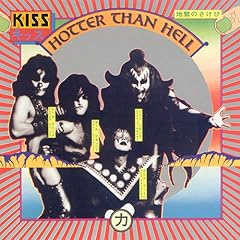



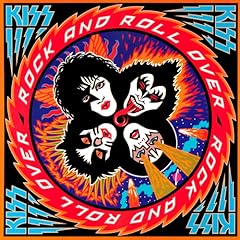
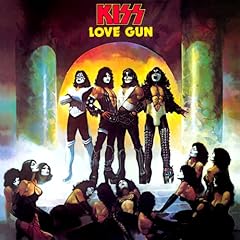
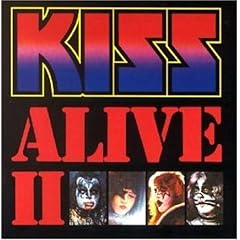

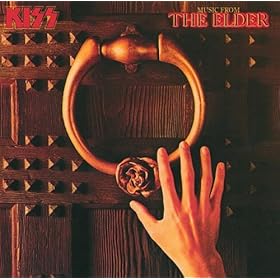
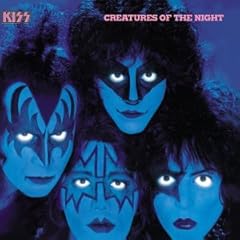
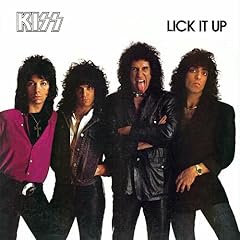

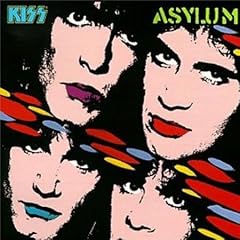



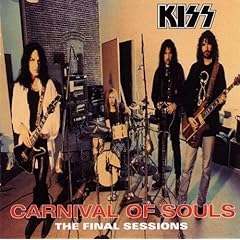
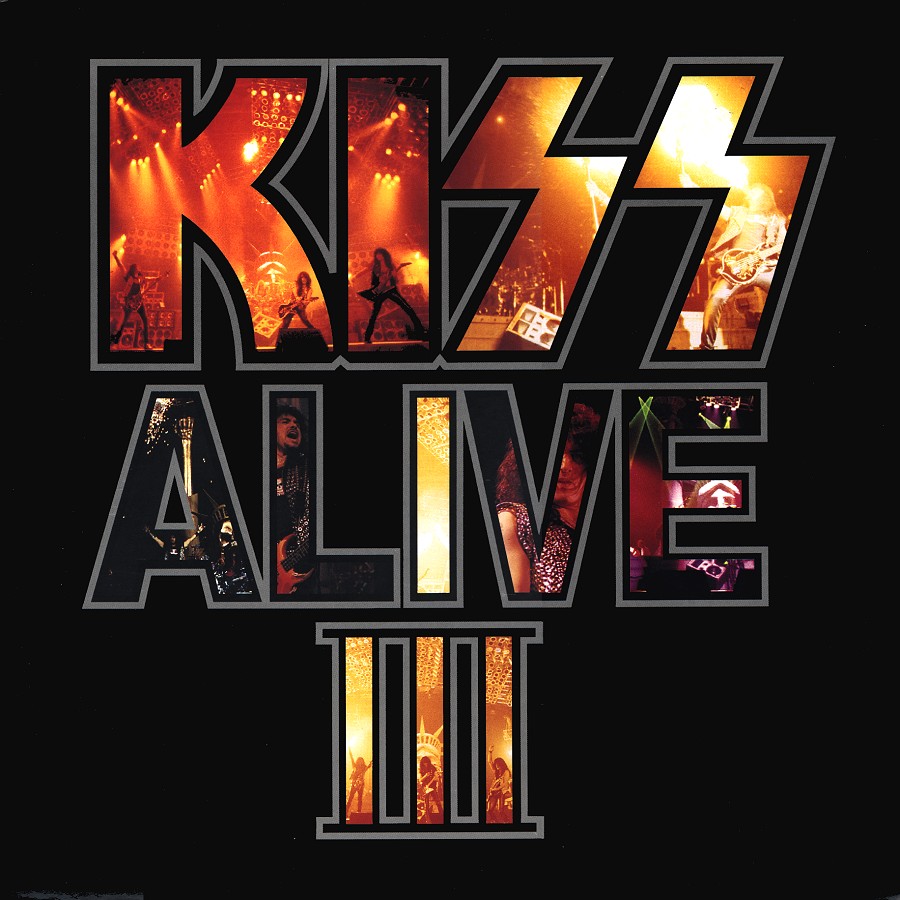
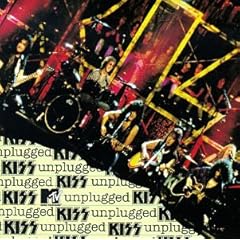

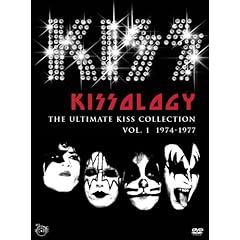

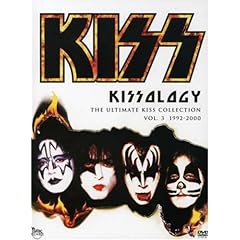





Comments